Review by Pete Vack
Lime Rock Park, The Early Years, 1955-1975
Hard cover with dust jacket
240mm x 330mm (portrait format)
680 pages
1070 color photographs
Printing 750, of which 150 will be signed/numbered. Signed/numbered only available through publisher, same price.
ISBN: 978-1-85443-316-9
$225 USD
Order here
As we all know too well, noise and racing cars go together, from the bellowing of American V8s at Laguna Seca to the perfectly executed downshifts of a Ferrari V12 approaching turn 5 at Road America. We love it.
But there are many who think otherwise, particularly at one of America’s most famous venues, Lime Rock Park in a remote corner of Connecticut. For there are those who prefer their idyllic weekends in those bucolic hills to be natural, quiet, and peaceful; the intrusion of a bunch of campers, race fans, extremely noisy race cars and even aircraft almost every weekend is a slap in the face that must be fought tooth and nail. But such battles are largely in the background. Few, aside from locals and regulars, are aware that a life and death struggle between the track and the locals has been going on since 1958 and continues to this day.
While a relatively small (but noisy) part of Terry O’Neil’s latest book, Lime Rock Park, The Early Years, 1955-1975, the attempts by locals to decrease the noise and nuisance level at Lime Rock are woven into the text, along with eight supporting documents as part of a very healthy appendix. We also must emphasize that this work, like all of O’Neil’s track histories, is a massive 680 page work, listing complete results (to the extent possible), combined with short but incisive reports of each event no matter what the sponsoring body, and a whopping 1070 photos.
But O’Neil’s seminal research into the issue of noise and opposition allows us to learn a more complete history of the track, as well as a much better understanding of what it takes to make a sports car racetrack viable, profitable, safe and successful. It ain’t easy. O’Neil documents a still-ongoing battle to both accommodate a business that brings much needed money to the small community of Salisbury and the desire for peace and quiet in the countryside.
O’Neil’s two-volume set about Thompson Raceway, The Golden Days of Thompson Speedway and Raceway 1945-1977 published in 2018 was a step out of the who won what box, as he describes the construction of the half mile asphalt oval, the construction and leasing arrangements, and the politics between the land owner John Hoenig, George Weaver, and their unsuccessful attempts to create a working relationship. Writes O’Neil, “I was met with a good deal of suspicion when I started asking questions because not all of it reflected very well on the tracks. However, I did submit parts of what I was writing, especially on the delicate matters surrounding Thompson, for current owners / close relatives where people were involved in what I was writing about. As Jon Hoenig said “I learned more about my family from your book than I knew before.” So pleased with what I did he asked me to do a book about the speedway oval (which I have started to work on alongside the Bridgehampton book).” The result is a rare, well-documented look at the problems of owning, sharing, leasing, advertising, and managing a road racing facility.
Taking on Lime Rock
Having done a bit of time getting around Big Bend myself, this reviewer was aware of the unusual restraints of racing at Lime Rock…no racing on Sunday and the limited use of unmuffled cars. But O’Neil’s book laid everything out.
Despite the fact that in the mid-1950s the Lime Rock Corporation, formed by landowner Jim Vaill, had raised over $100,000, mostly from local businesses, to finance the construction of the track, locals who objected to the racing were both powerful and vocal. Right from the start there were objections, and within a year of the track’s first event in 1957, the opposition created an organization called “The Lime Rock Protection Committee” and over the years would use a variety of legal challenges to chip away activities at the Lime Rock Corporation (the track). Formed in August of 1958, in a lawsuit, the group of 28 people claimed the track was “…a nuisance and that irreparable injury to the plaintiffs had occurred.”
The biggest complaint however, was the noise. Initially, racing on Sundays was not to begin until after 2 pm, and by 1959, racing on Sundays was banned altogether. By 1975 the Committee managed to ensure limited use of unmuffled race cars, the creation of a barrier zone to dampen noise from the track, banning the use of all aircraft at the track including helicopters, and limiting the number of campers. The track complied with these and other agreements, but the two sides are still at odds today.
We thought of an old acquaintance who has often bemoaned the lack of academic discipline in many automotive books and publications and reached out to him to ask what he thought of O’Neil’s work.
H. Don Capps is a retired U.S. Army colonel and member of the Society of Automotive Historians, currently serving as a member of the Board of Directors and Chair of its International Motor Sports History Section. He emailed, “I happen to rate Terry quite highly and for the reasons you mention: his work on these two books in particular includes the sort of discussions relating to issues that seldom make it into the narrative when the history of motor sport is written. In both cases, these issues are crucial elements in the stories relating to the tracks. Indeed, they are essential elements to the telling of their histories. The cultural elements of motor sport, which include that social history you allude to, are either too often missing or reduced to the sort of folklore and even mythology that seems endemic to how too many approach the history of motor sport.”
For us, O’Neil’s book offered a look at how we and fellow enthusiasts are viewed from a different perspective, and how our passions often conflict with the desires of others. Writes O’Neil, “To me, the importance of including social history helps give a broader picture of the trials and tribulations that track owners endured.”
Not overlooked is that Lime Rock also has an interesting history of ownership, management and leadership. John Fitch played a prominent role in the success of the Corporation, working with the SCCA and other sanctioning organizations to put on different and unusual races, including the first “Little Le Mans” for sedans and the unforgettable Formula Libre events. His role, and his eventual parting with Jim Vaill are documented. The Vaill’s were succeeded by Jim Haynes, who was well equipped to deal with the constant lawsuits, including a manslaughter charge due to an accident on the course after track hours. When it came to management, Lime Rock, like Thompson, was no picnic.
Below we present a tiny fraction of the 1070 photos in the book. And under the photos are links to every one of Terry’s books we have reviewed in VeloceToday.
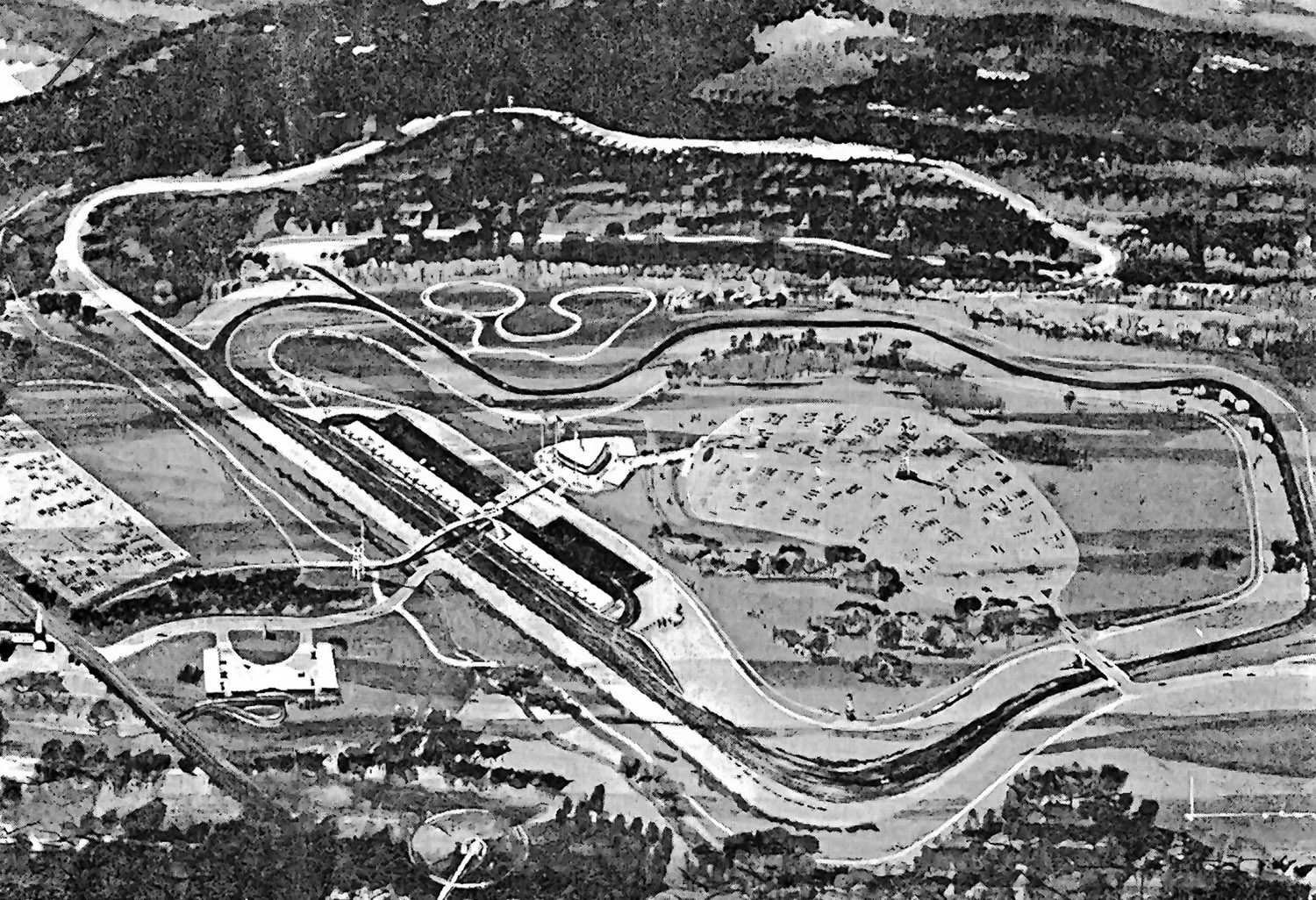
As originally proposed, Lime Rock was a three-mile track through the Vaill’s property. Money and two hurricanes delayed construction and shortened the track to 1.53 miles. Construction began in 1955 and the first event was run on April 28, 1957.
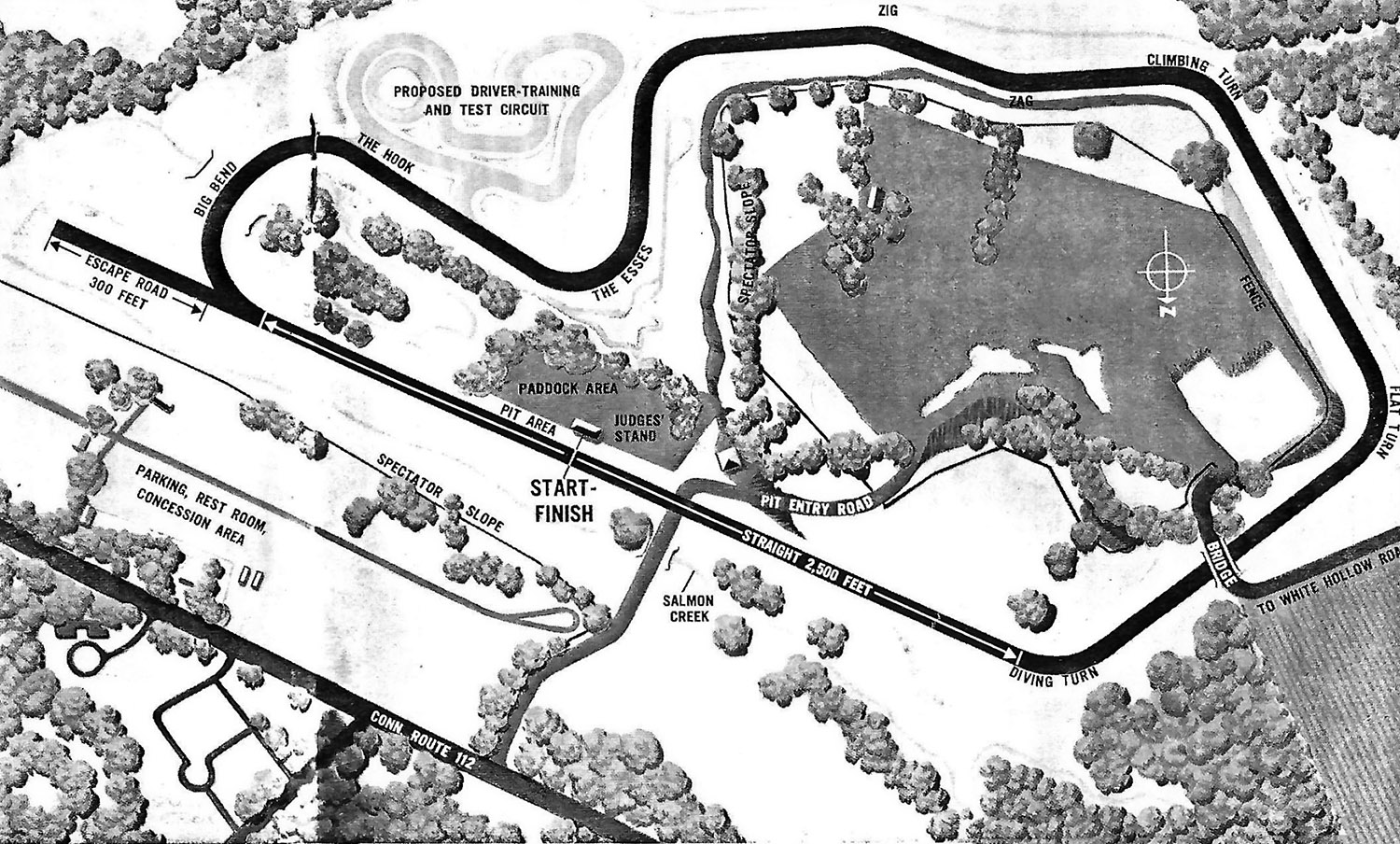
As built, the course was challenging, full of right hand turns and a very tricky ‘diving turn’ leading onto the main straight. The pits and crossover bridge were to have been designed by Raymond Loewy but money was still very tight and the deal fell through.
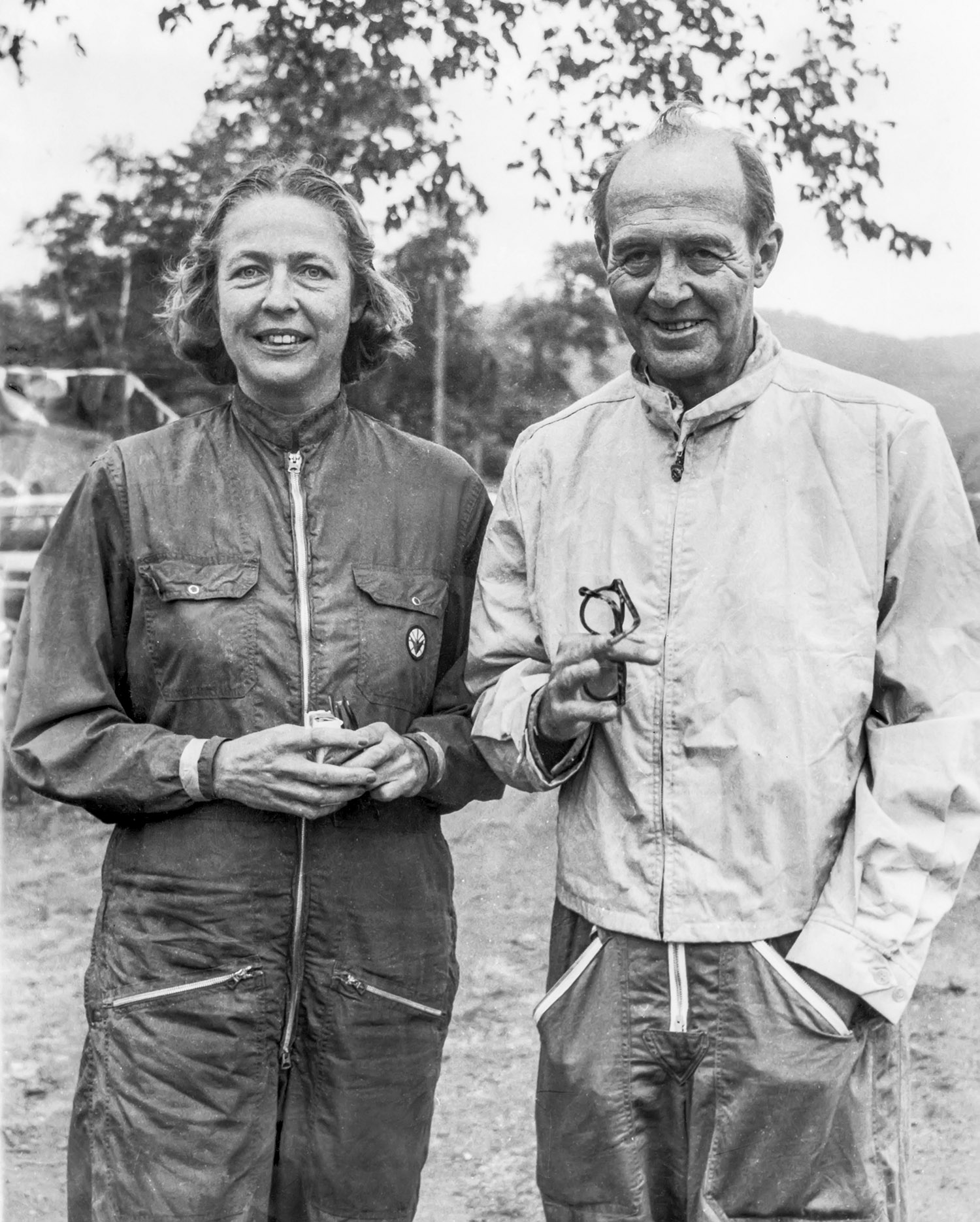
John and Evelyn Mull often competed at both Thompson and Lime Rock, most often and successfully with AC Bristols. Evelyn was 40 with a married daughter when she began racing and in general did better than husband John. Here they are seen at Lime Rock on July 28th, 1957 when they both entered their own AC Bristols. Evelyn finished second in Race 4 while John took fifteenth.
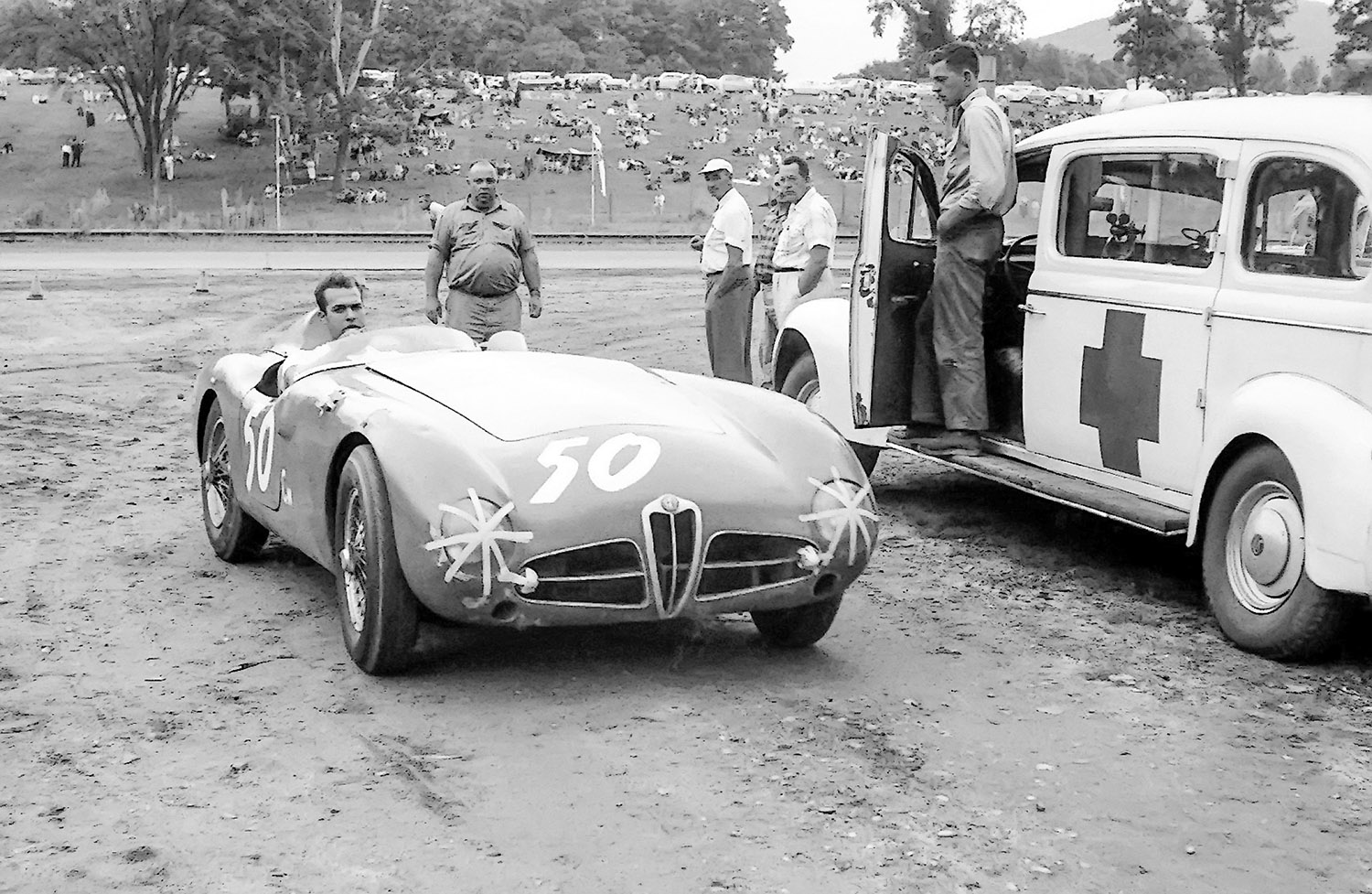
Did you know that Rodger Ward once drove an Alfa, and a Disco Volante to boot? September 7, 1958 a USAC professional event was held in the middle of the SCCA amateur vs professional conflict. Even track manager John Fitch could not get his friend Briggs Cunningham to enter the event as Briggs was loyal to the SCCA. Ward, of course, was a USAC professional driver and was asked to drive the Alfa in the event.
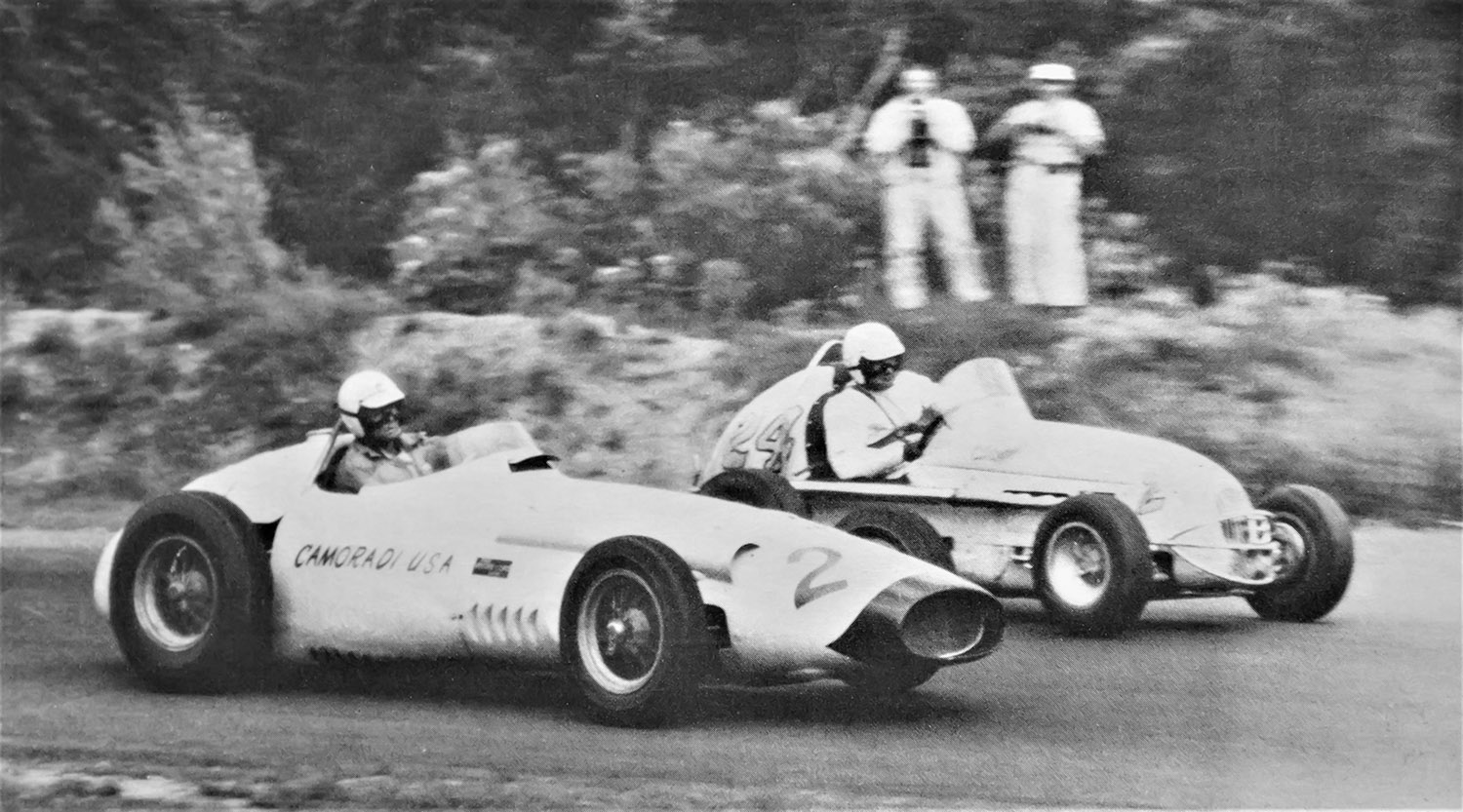
Getting into sports car racing was not easy for USAC and to bolster entries and interest they concocted an International Formula Libre event for June 25, 1959, and invited all sorts of midgets and sprint cars to enter. They came in numbers, and won against the best Europe could offer. Rodger Ward had just won the Indy 500 and beat a Maserati 250F driven by Chuck Daigh. A day to remember.
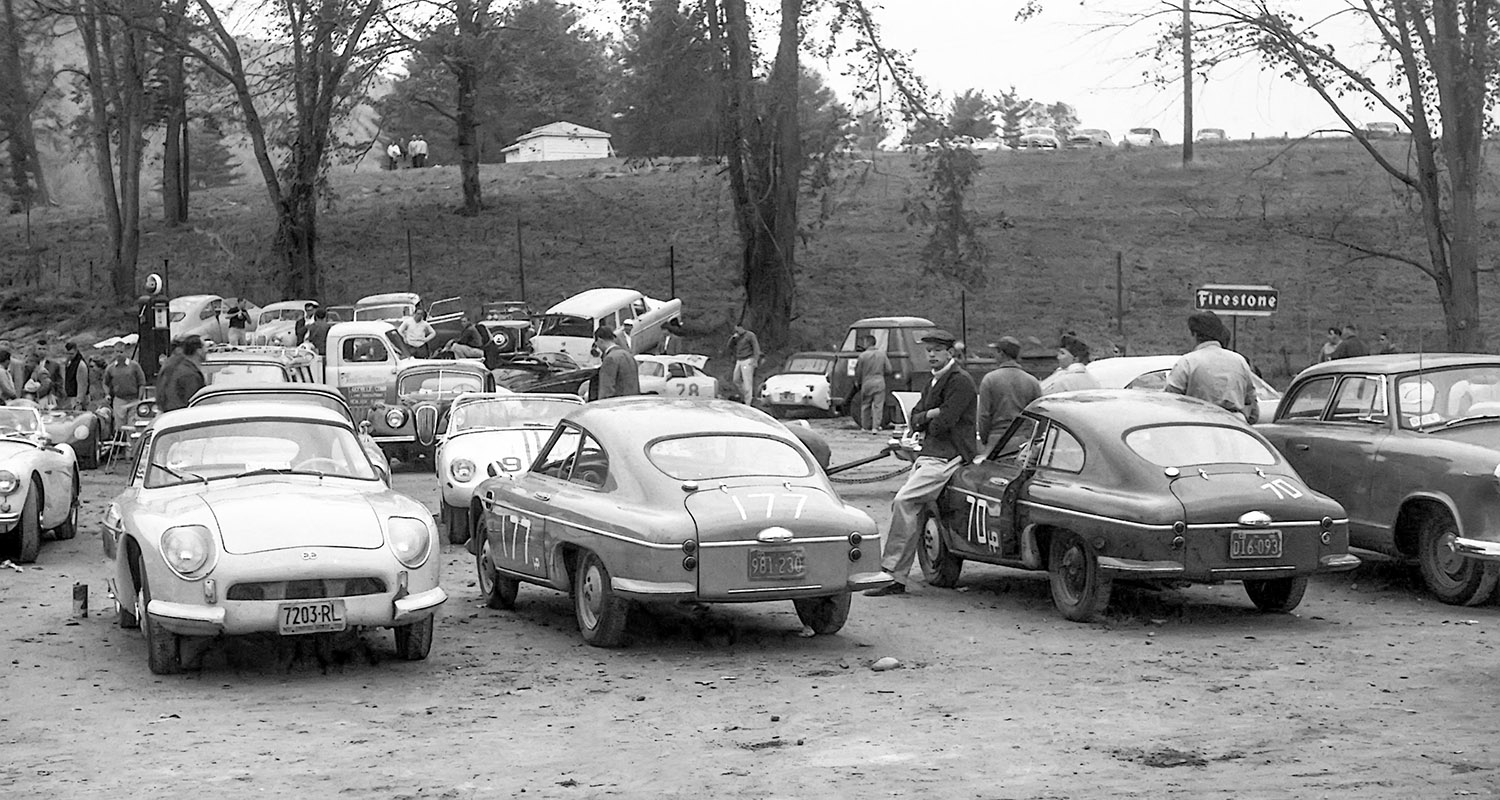
More DBs than one will ever see outside of France gather for the SCCA race on October 17, 1959. From left to right, the cars of John Hearst, Collier Miller and George Garrett.
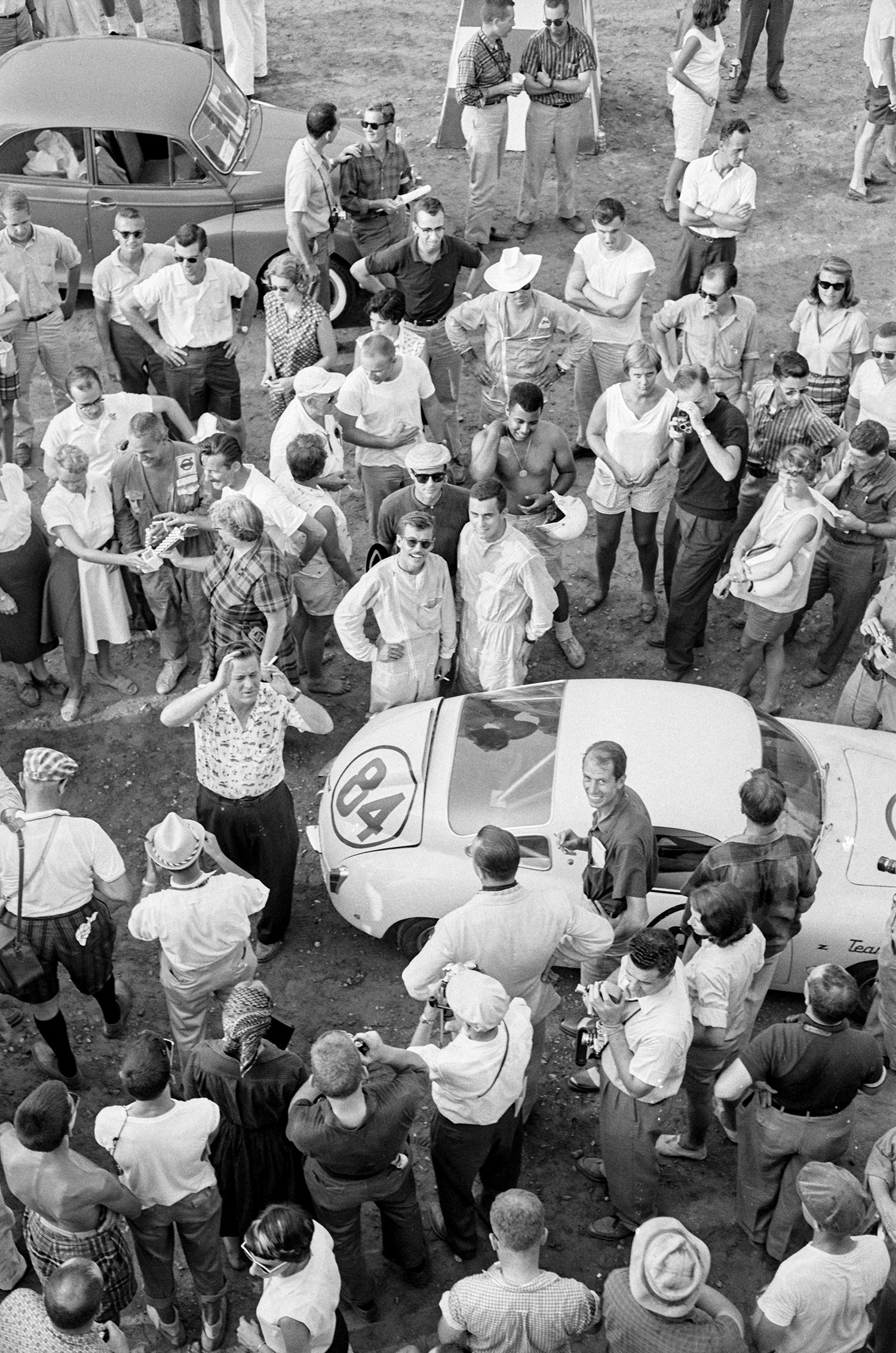
Charles Callanan, center left, Roger Penske next to him and John Fitch by the passenger door know that Tom Burnside is taking this overhead shot. Penske and Callanan are celebrating their win in the 8 hour Little Le Mans enduro for sedans on August 15, 1959. How the Team Roosevelt Abarth Record Monza qualified as a sedan is a good question. The first real sedan, a Volvo driven by Sports Car Graphic editor-to-be John Christy and TV newsman Walter Cronkite, finished third after the two Roosevelt Abarths.
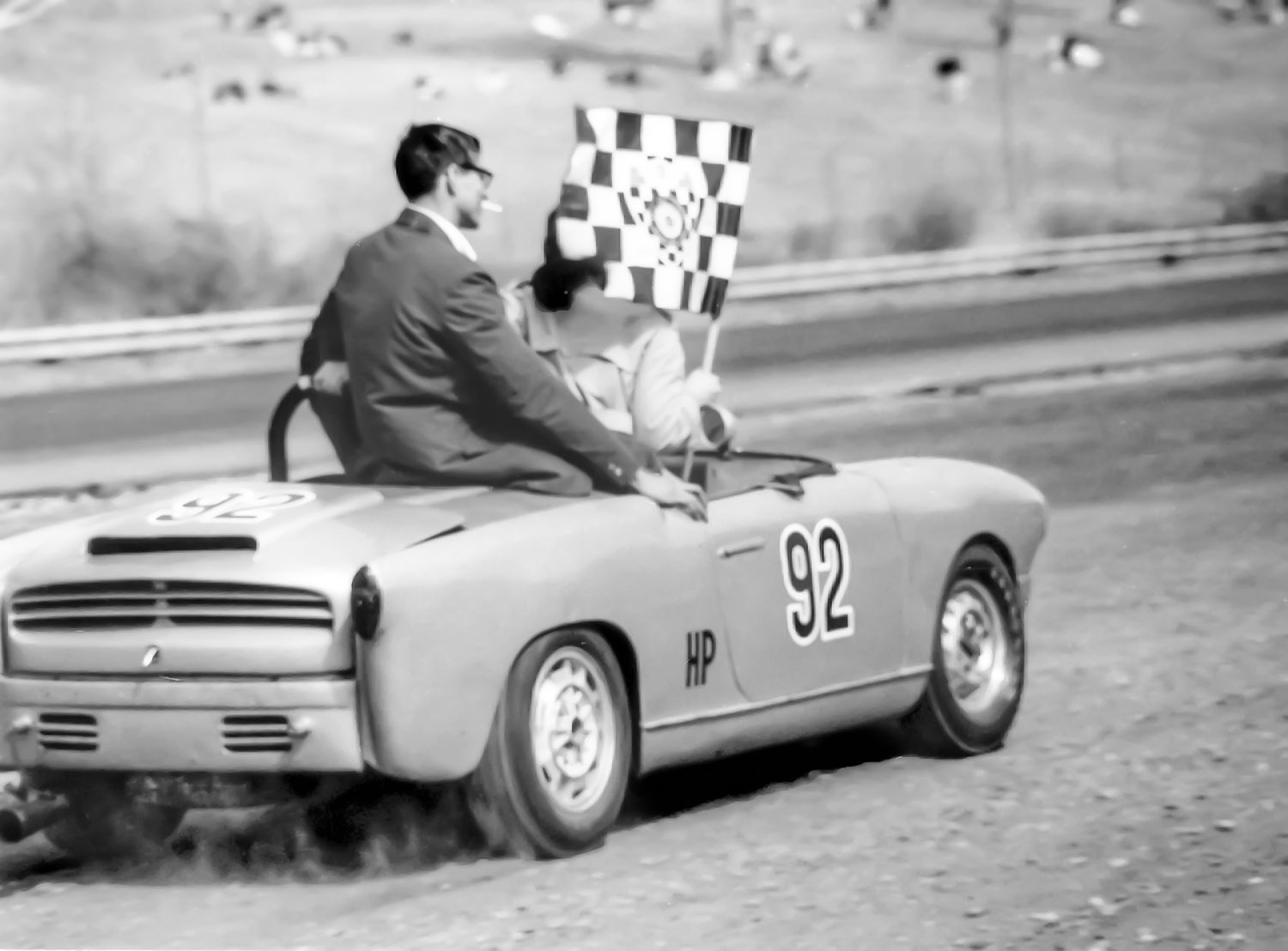
This Fiat Abarth Allemano Spider was driven by Ron Catalano to a win in HP on April 17, 1965. Things were changing fast, with a much more professional entries dominating the grids and there was little hope for the little guy who once drove his race car to the events on a shoestring budget.
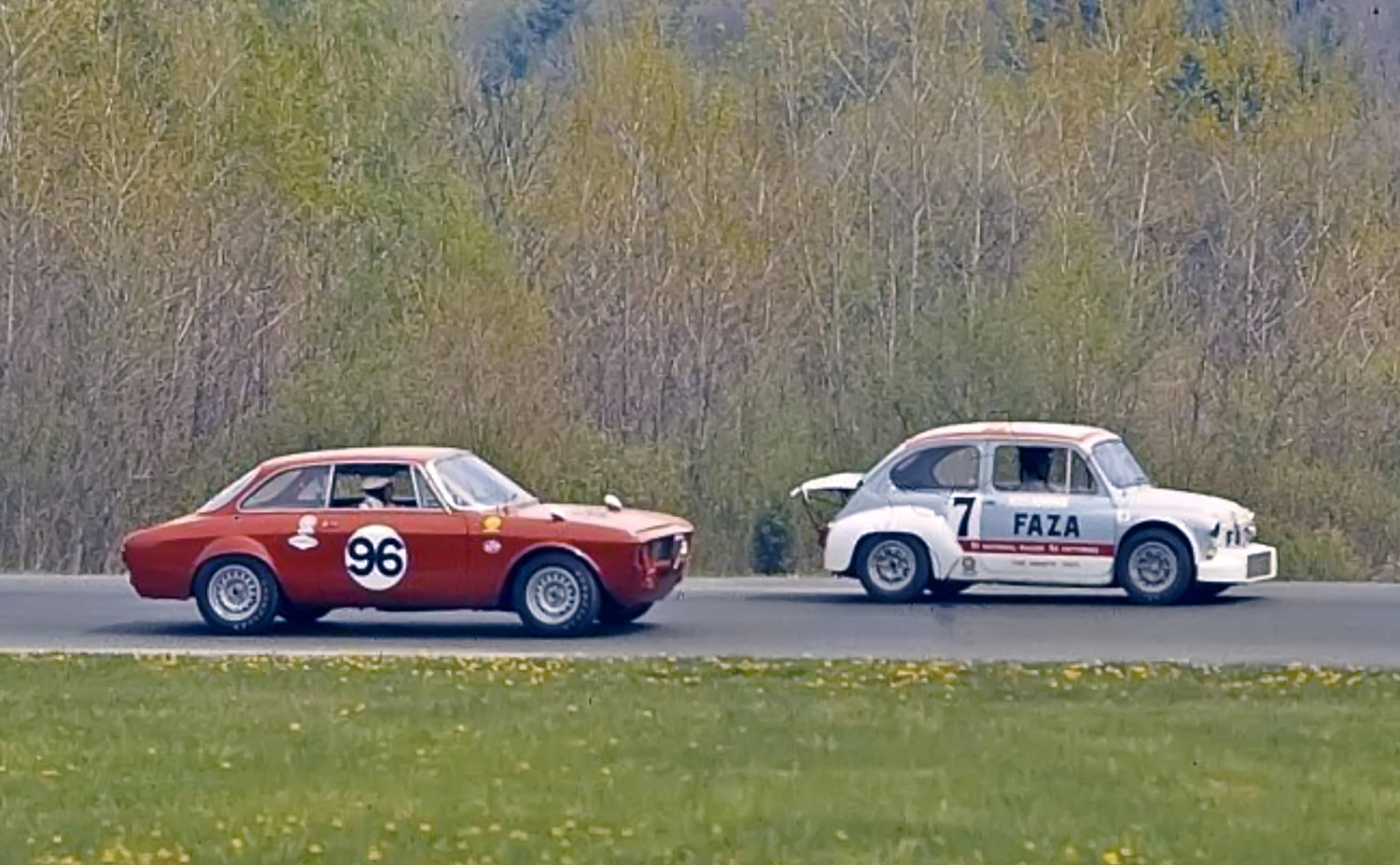
Trans Am racing took hold in 1970, offering a wide variety of both muscle cars in the bigger classes and imports in the Under Two Liter class. Here, Carmelo Giuffre in an Alfa GTA is about to get around the Faza Abarth 1000 driven by Craig Fisher.
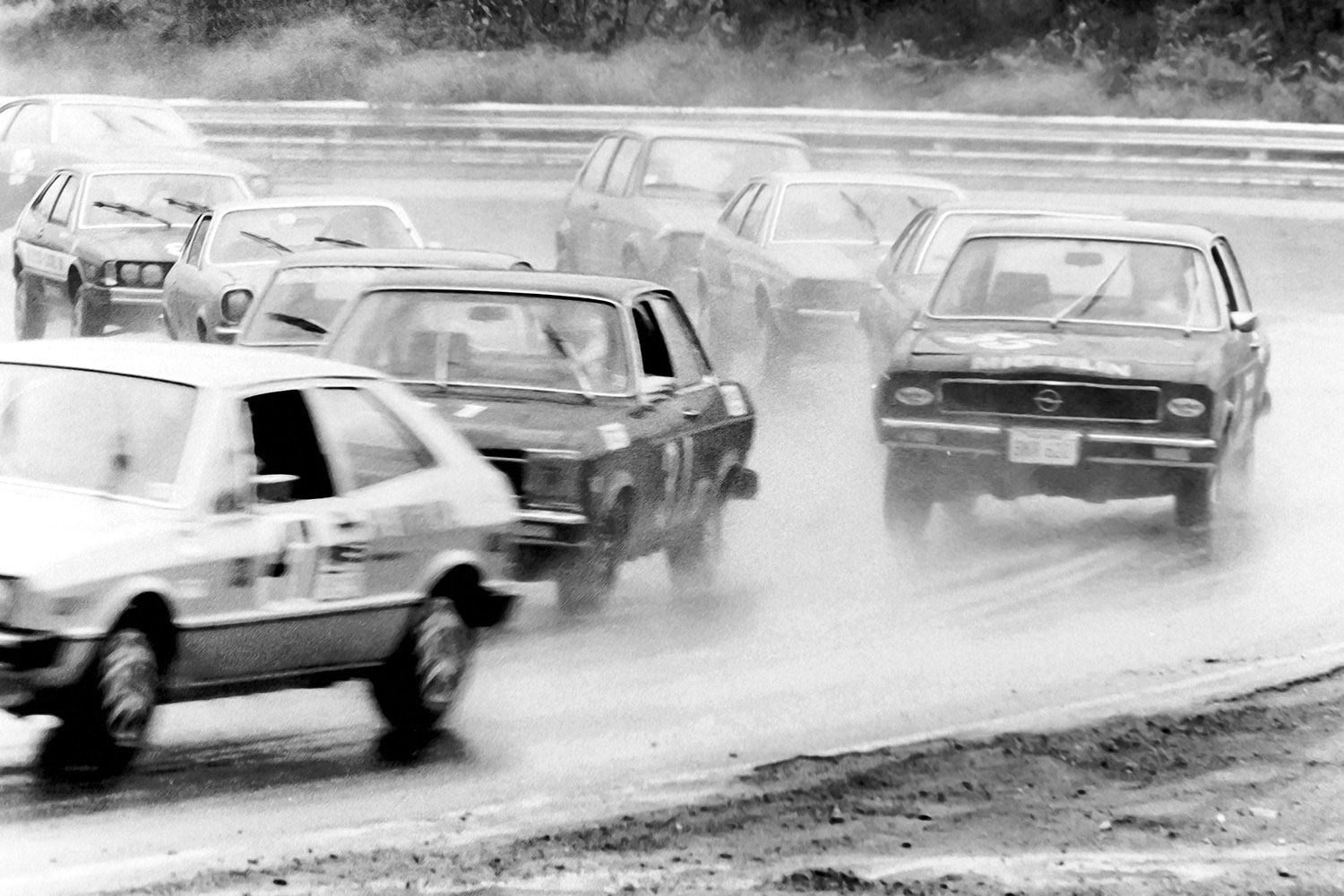
By 1975 the SCCA was putting on a bewildering number of races and classes, which made it hard for the race-going public to understand. One of the most popular classes was the new Showroom Stock class. Here are a group of cars running in the rain on October 11, 1975. They were of course, muffled. Despite changes in ownership and management, constant lawsuits and bad weather, Lime Rock Park endured and even began to prosper.
This is O’Neil’s tenth book and the fifth covering races. For much more about those books, and about how O’Neil has managed to record history in depth, read the reviews below. We’ve been reading O’Neil since 2011! All reviews are free and open for anyone to read.
Feb 2011
August 2014
April 2015
Book Review, Mid-Atlantic American Sports Car Races, 1953-1962
Feb 2016
August 2018
Feb 2020 https://velocetoday.com/velocetoday-reviews-ferrari-333-sp/


Wow, Good Stuff !
I had to pleasure to attend many events at Lime Rock Park while I lived in CT. My wife and I would go up from Waterbury as often as possible. Even when there was no racing scheduled. The drive up along the Housatonic River is wonderful at any time of the year. I would actually fly fish in it and in the small stream running along side the track. Picnic lunch at the track was a big event. We met John Fitch while eating one Saturday afternoon, he stopped by our little spread and asked if he could pet our Keeyshound Bandit. We said absolutely ! We then offered him something to eat. He declined but asked us to visit him at his home one day. After he walked away I told my wife who he was and what he had done during WWII and afterwards. The racing was great but the sights and sounds and beauty of the surroundings was what really made the track special. Thanks for the opportunity to relive those incredible times.
Oh my, the memories! My first Drivers school was at Lime Rock in ought-’62, Gordon MacKenzie, kilt a-whirling, Chief Instructor. First laid eyes on that magical place in 1961: three or four of us young car nuts of the Newark College of Engineering Motor and Sports Car Club cut classes and drove the 115 miles up to Lime Rock to try and crash the “Dealers-Only” weekday debut of the original Issigonis-designed Mini. No credentials? “Go sit on the outfield spectator grass!” Fangio, Rodriguez, Ireland headed the Pantheon of greats who were to “demonstrate” those diminutive demons, and one just HAD to be among them. Beyond the barbed wire, fording – shoeless – the shallow Salmon Kill got one onto the barely-worth-the-name Escape Road, all 300 ft of it (I see from the above). Now what? The track was hot with Minis hauling tons of overweight dealers around in a blinding buzz – how to get in without getting thrown out? The Good Lord answered the prayer with a “Pop!Pop!Pop!Pop!…” from above as a J2 Piper Cub, yellower than a canary and twice as light ( you can just BARELY kill yourself in a Piper Cub, it is said) descended straight down in an alternative wing-swinging series of slips and plopped onto the asphalt; a 50-ft rollout would be exaggerative. Helping the magician-pilot push Yellow Feather under the adjacent treeline, he stuck out his hand and introduced “Paul Richards.” OMG – I knew he drove Jaguars and things for Briggs Cunningham, but did not know he also flew Sopwith Camels and things (with Snoopy) for Cole Palen at nearby Rhinebeck Aerodrome. They sent a VIP mini to transport “us” into the infield amidst a blaring of tin horns. We can probably be seen in this 3-1/2 minute newsreel of the occasion @
https://www.youtube.com/watch?v=1xNU5_iZH7A.
I attended the 1970 TransAm race pictured. Took my sweetie at the time in my Abarth 1000Bialbero Record Monza, ex-Sebring racer. I would have attracted more attention in a ’57 Chevy. Few glanced at the car and nobody asked anything about it. Still haven’t figured it out.